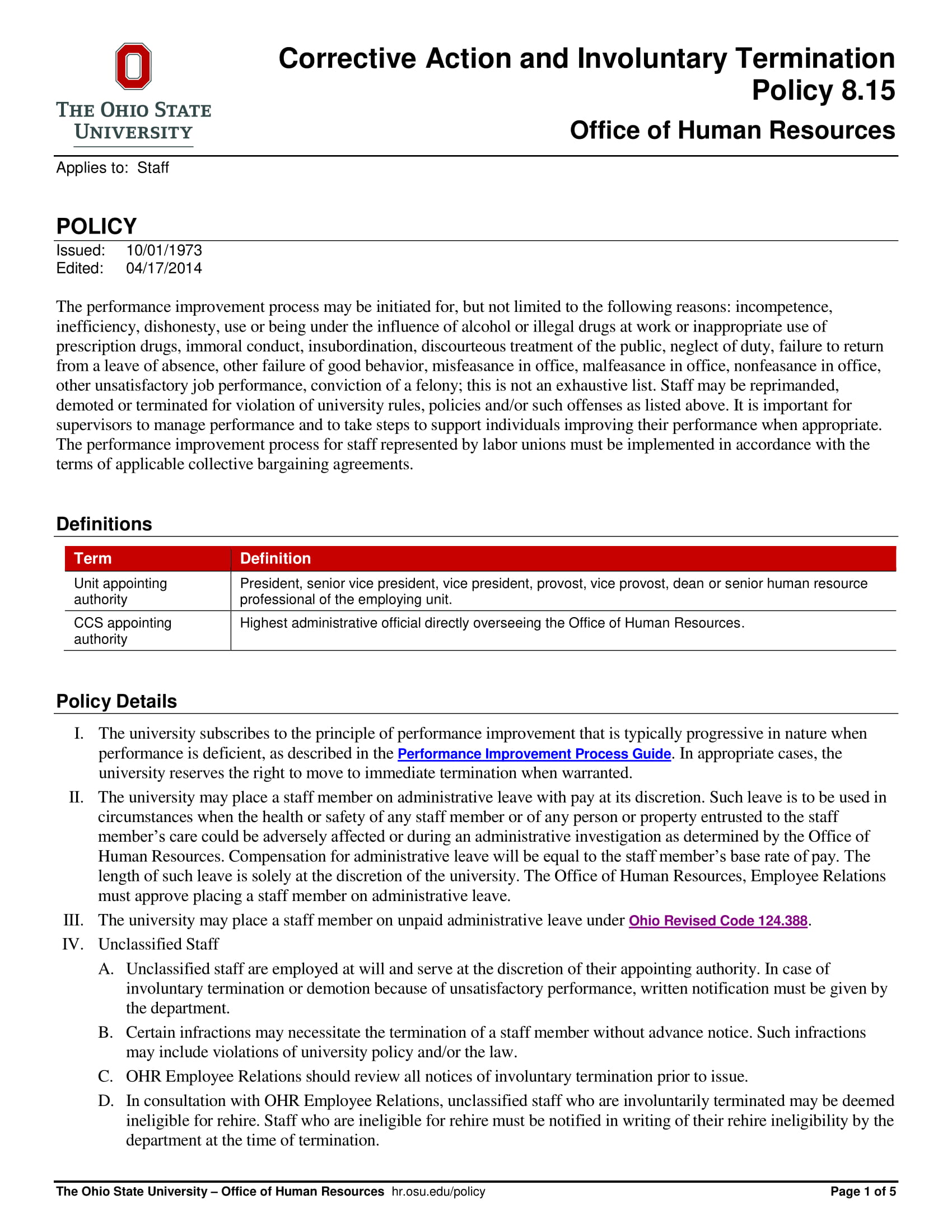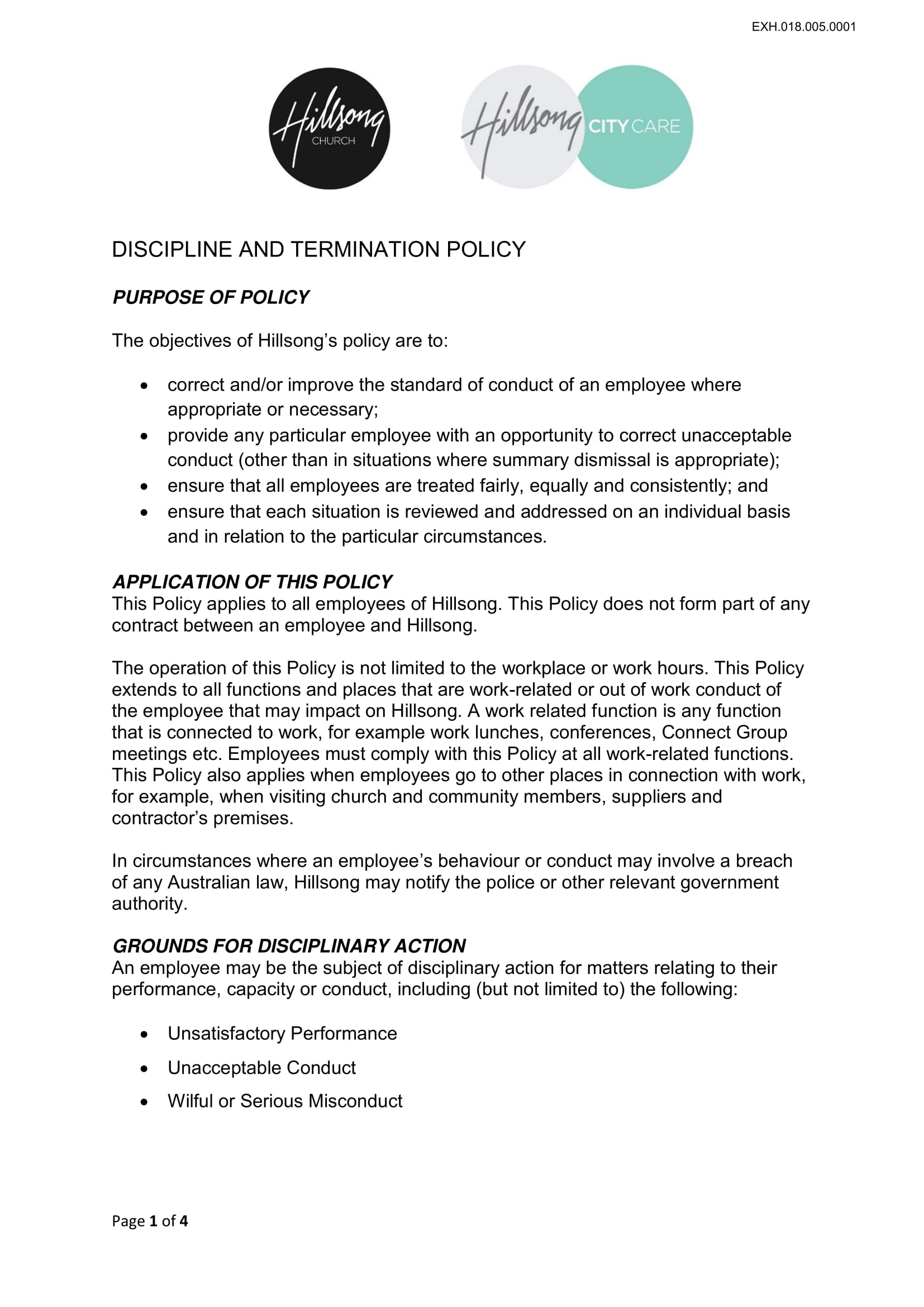

Can the decision for employment termination still be changed? Does an employer need to provide notice of termination? These are only a few of the questions that you can easily answer if you will come up with comprehensive termination policies and procedures. When you are in the process of terminating an employee, you have to make sure that you will follow the regulations of the company and the specifications stated in the contract of the employee. It is essential for businesses to have a legal, transparent and unbiased termination procedure to ensure that employees will be terminated objectively.


Having termination policies and procedures can help the management and the human resource department assess situations where termination is considered as the best option to execute. We have listed several termination policies and procedure examples so you can identify the details that you can also incorporate in your own business’ policy and procedures for termination.
How you will terminate an employee can reflect the management style of your business. Even if you will already be parting ways with the employee that will be terminated, it is still essential for you to protect the rights of the individual. Here are the steps that you can follow if you want to develop a termination procedure that promotes privacy and confidentiality within the entire transaction:
1. Identify the objective or main purpose of the termination procedure creation. You have to be aware of all the agreements that you have made with the employee so you can ensure that workplace and employment regulations are followed. This will also help the business comply with legal provisions, standards and legislation that can lessen possible court trials should the employee file for a case after his or her termination. You may also see creative ways to structure your hr department.
2. Be specific in developing the scope, limitations and boundaries of the termination procedure that you are currently developing. This can make it easier for all entities involved in the transaction to have a clearer overview of the processes that they need to regulate and implement. You may also like hr memo examples & samples.
3. Know the reason for the employment termination. Is it because of retirement, voluntary exit or resignation, death, misbehavior and misconduct or unsatisfactory employee performance? Knowing the root cause of the termination can help you be well-guided on how to lay all the essential procedures for the particular termination. You may also check out best human resource policies and practice.
4. List down the termination procedures accordingly. Again, you have to be specific when it comes to designing these procedures as there are different types of termination that an employee can be subjected into. More so, you have to make sure that your termination procedures are laid out in an organized and realistic manner. A basic termination procedure can be as follows:
5. Specify steps when a review of the termination decision is requested by an employee. You have to ensure that you can present evidences and proofs of the reason for the termination. Metrics and other measures can also be presented. You might be interested in reasons why hr is critical to your company’s success.
6. Once you have already listed the procedures for termination and decision review provision, the next thing to do is to delegate or disseminate all the responsibilities of point persons that will be involved in the termination. This can promote a smooth flow of termination process. You may also see importance of human resource management.
7. Lastly, come up with a general time frame that can be followed once the termination is already final and scheduled. You can change this time frame depending on the needs and demands of particular termination instances.